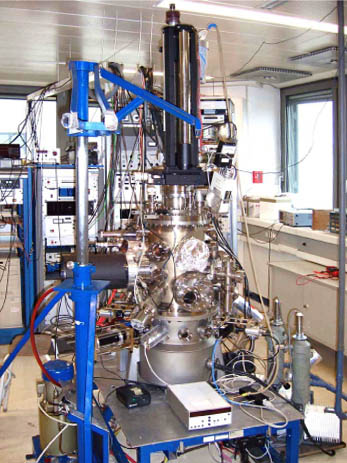This is an old revision of the document!
The LEED & MOKE machine
Having its roots in the 1980ies, this ultrahigh-vacuum (UHV) machine has seen many generations of students doing work in widely varying fields, e.g. photoemission in the early days, low-energy ion scattering (LEIS), quantitative low-energy electron diffraction (LEED) and magneto-optic Kerr effect (MOKE) measurements of surface magnetism; the latter available in the recent years.
The mu-metal UHV chamber houses a sample manipulator with heating and cooling (≈100 … 1000 K), two ion sources (for sputtering and LEIS), a small rotatable hemispherical analyzer for LEIS with different scattering geometry, a hemispherical analyzer with concentric electron source for AES and LEED optics. The MOKE setup uses atmospheric-side coils with yokes reaching into the vacuum chamber, reaching a maximum field of ≈ 0.1 T in the 3-cm gap. Kerr rotation and ellipticity of the HeNe laser beam reflected on the sample are measured with a modulation technique, using a photoelastic modulator.
A major renewal of this UHV system is currently under way (2009).



